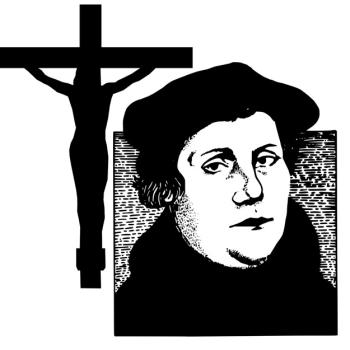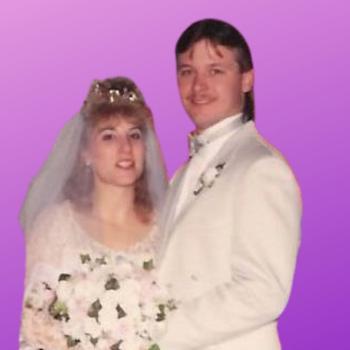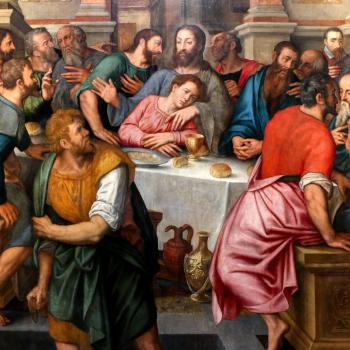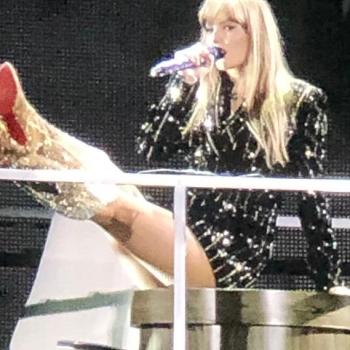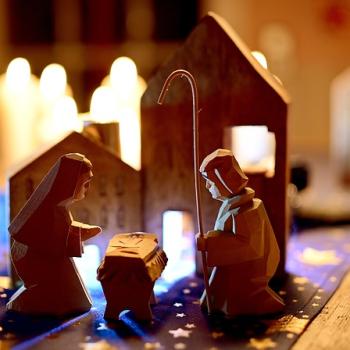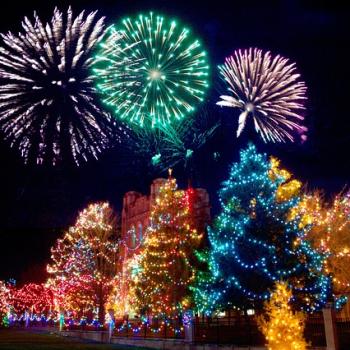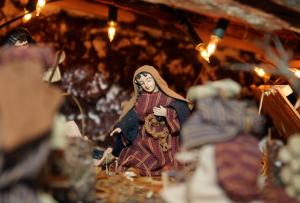
I found myself shuddering with numinous joy, two days before Christmas, in an abandoned storefront in downtown Steubenville, staring at plastic a Nativity scene.
I finally got to go to the Nutcracker Village and the Advent Market this weekend. Serendipity is up and running again, with a fresh coat of paint thanks to Jimmy and his boy. My veteran readers know that the Nutcracker Village is a favorite holiday tradition of mine. I’ve been excited to get a coffee at Leonardo’s and browse at the bookstore and see all the funny decorations for weeks.
This year, I found a new addition to the annual display. A “creche museum” has been opened in one of the vacant store fronts on Fourth Street. One of the local churches organized it: a display of as many Nativity scenes as they could collect, and the cost of admission is a donation. Today, the last day of the Advent Market, I found the door open and heard Christmas carols playing inside.
I have an autistic fascination with miniatures of all kinds, so of course I love little Nativity sets. I dropped a handful of change in the bucket and went right in.
It was glorious, just what one wants in a Christmas display: an eclectic jumble of handmade Nativity sets and store bought Nativity sets, colorful sets and plain sets, reverent shrines and goofy parodies, all next to each other on shelf after shelf. Some of the creches were made of wood. Some were made of clay. Some were glass or ceramic. Some were cross stitched or quilted. One looked to be braided from corn husks. There was a whimsical set of farm animals with a flying pig playing the part of an angel. There was a set of jungle animals with Jesus played by a baby hippo. There were handmade Nativities from Germany and the Czech Republic that looked like European people. There were Nativities from Peru and Alaska and other parts of the Americas that looked like indigenous American people. There were Asian Nativities. There was one that was bought at Walmart and another handmade from clay by a fourteen-year-old girl. One had Saint Francis standing with crowd of animals near the crib, one had the Spirit of Christmas Present from Dickens, and one had Mary and Joseph taking selfies with little phones.
Soft, electronic Christmas carols were playing in the background as I browsed. I eventually came across the source: a moving Nativity Scene, with magnetic Magi and shepherds skating round and round in a loop on an ice rink, searching a suspiciously snowy Bethlehem for the Christ child.
I watched them circle for awhile.
Even though it was all so heartwarming and silly, I found myself shuddering with a deeper, more reverent joy.
What we as Catholics know by faith is that eternity enters time at a certain junction in history, and this junction is called the Incarnation of Christ. It wasn’t necessarily on the exact spot where a church was built later, though it’s beautiful to believe that it was. The reasons we celebrate the Incarnation just after the winter solstice aren’t bad or arbitrary reasons, but that doesn’t mean we know just when it happened. We do not know exactly how certain parts of Luke’s Gospel line up with other sources in Roman history, so we can’t say that this or that bit of the tale isn’t a sacred and inspired form of poetic license. We can make up beautiful additional stories about the the midwives and others who attended the birth of Christ, boys with drums and girls with poinsettias, the names and races of those mysterious magi who came from somewhere else, and I’d be delighted if a lot of those stories turn out to be true. But we know by faith that, a couple of millennia ago, in Judea, the Holy Spirit got consent from a girl called Miriam and caused the Son of God to become incarnate without sex, without violence, without changing her body in any way. We know that in the fullness of time He came out of her equally gently, leaving her a virgin still. This Divine Person was truly human, a man with a certain Body with certain characteristics and limitations. He belonged to a culture and knew their stories and their customs; He worshipped with them and was one of them. He preached His message, and some received it while others rejected it. He was betrayed by His own countrymen and lynched by their brutal conquerors in the most terrible way that the conquerors could devise. He was physically, emotionally, spiritually and sexually abused by His torturers, and then He died and was buried and descended into hell. On the third day He rose again according to the scriptures. He ascended into Heaven, and sits at the right hand of the Father from where He will come again.
He did this because He loves us and wanted to share everything that we have. He did this so that no one who finds themselves a victim of violence and suffering could ever be in a place where God was not. He did this so that all of the human experience, our conception and birth and life and suffering and death, could become part of the Life of the Holy Trinity– so that, just as eternity invaded time, time might become one with eternity. God became man so that man might become God.
Because of eternity’s invasion of time through the womb of the Virgin Mary, every human experience is a thing touched by God. Everything is sacred. Everything is important. All of our traditions and cultures and experiences are touched by eternity.
How holy, how right, how fitting, that when we sit down to make a piece of art portraying the Incarnation, the results are so diverse. Of course some are silly jokes and some are serious pieces of art, because human beings are silly and serious and both those parts of us are sacred. Of course some are painted and some are carved and some are embroidered or quilted or molded from clay, and all of these are sacred because they are things people do. Of course figures from different parts of history like dear Saint Francis can appear in a Nativity scene, because the Nativity is the place where eternity swallowed up time and all times are one there. Naturally, this one from Asia makes Mary, Joseph and Baby Jesus look Asian and this one from Alaska has them all with tan skin and wearing fur; this one from South America has them all in colorful Bolivian costume; and this one from Germany makes them look like Medieval German peasants. The Incarnation is when God appeared among us as a certain person in a certain culture with a certain race who looked a certain way. Races and cultures and the way people look are all Godly things now.
That was how, on the day before Christmas eve, at the end of a very hard year that’s turned out so much better than I could imagine, I found myself overwhelmed and nearly in tears, as I stared at a little electronic moving Nativity scene, in an abandoned storefront in Steubenville.
I’m so glad I got to see it.
I’m so thankful for all the ways I’ve seen God incarnate this year.
And I wish all of you a very Merry Christmas.
Mary Pezzulo is the author of Meditations on the Way of the Cross, The Sorrows and Joys of Mary, and Stumbling into Grace: How We Meet God in Tiny Works of Mercy.




